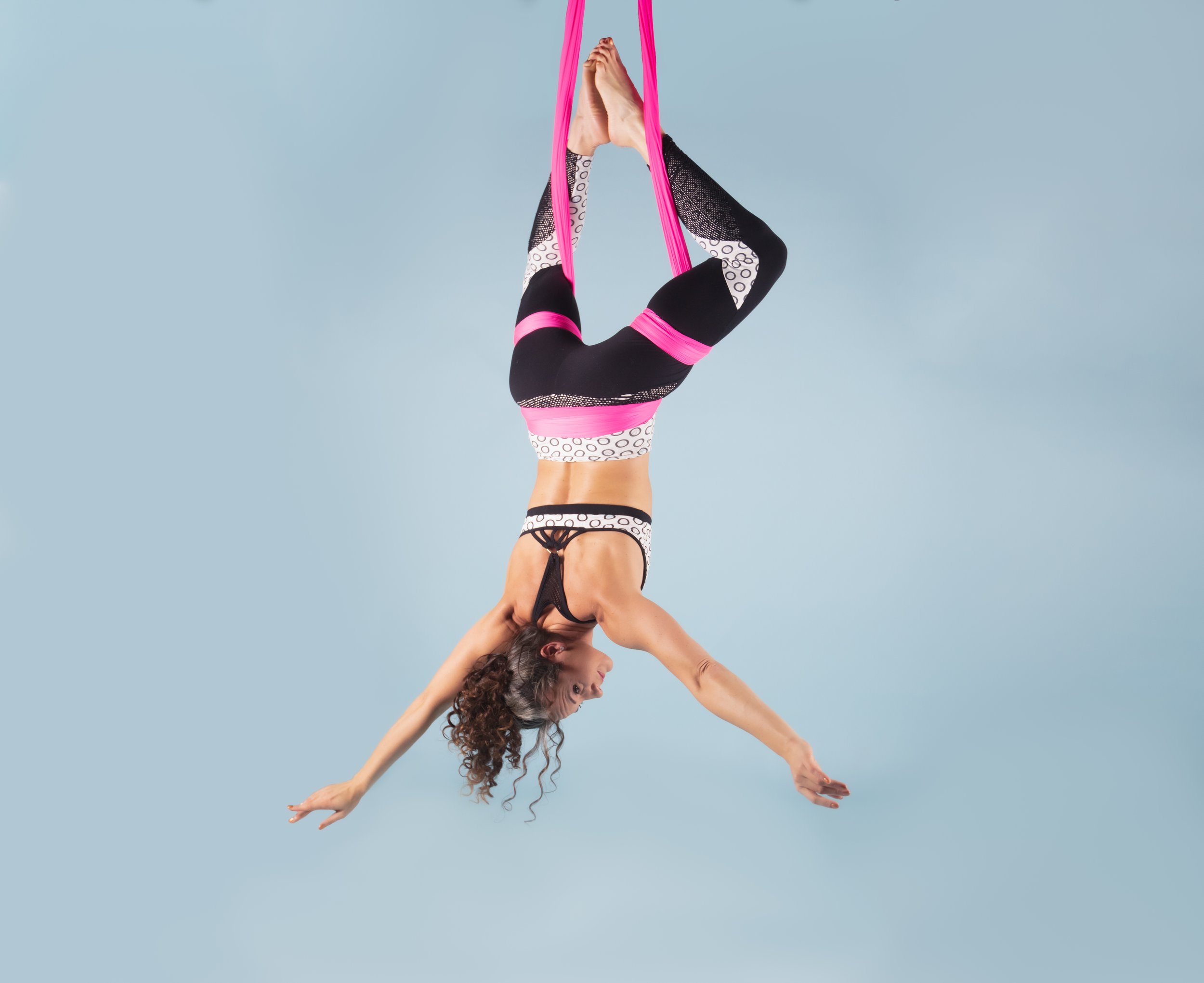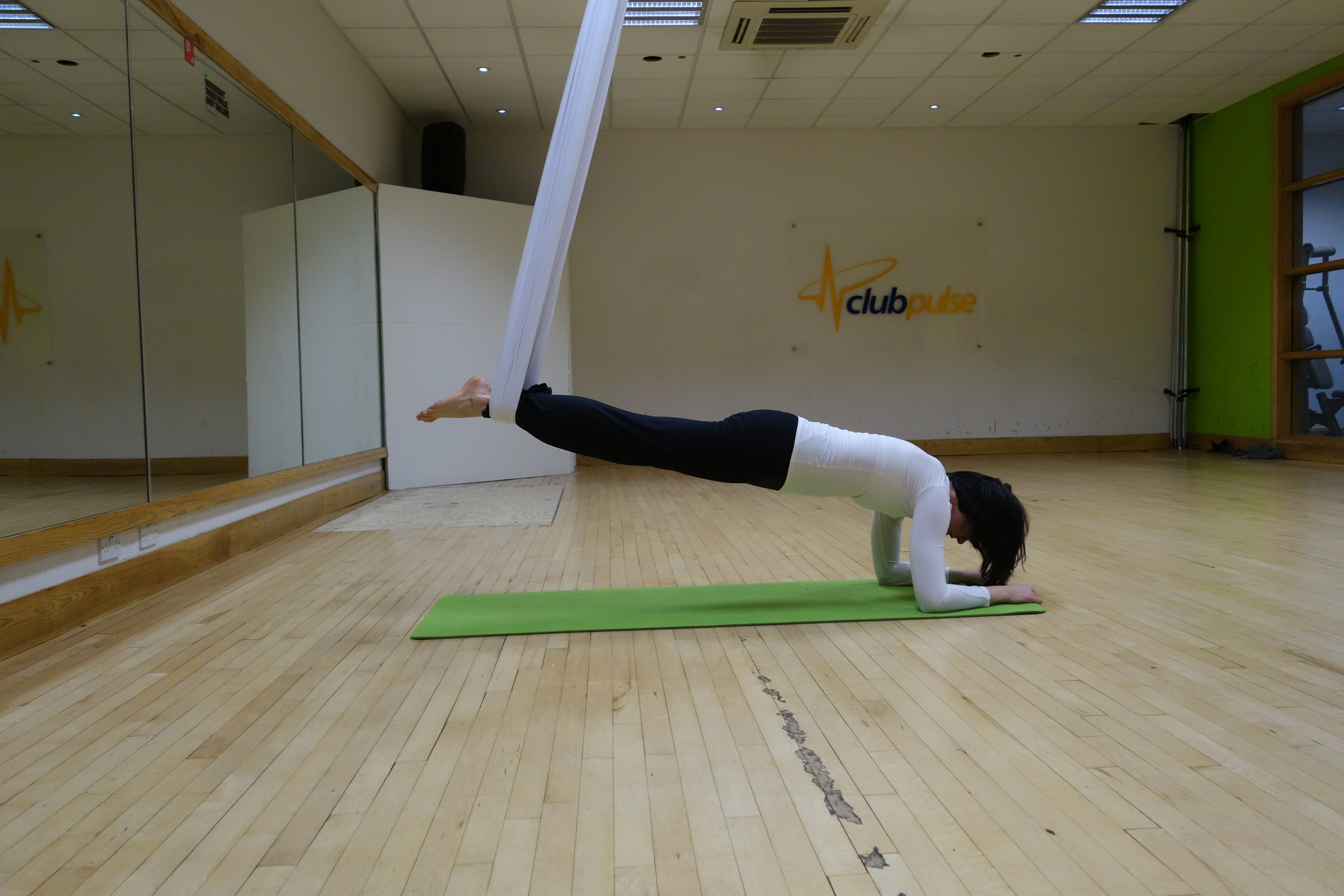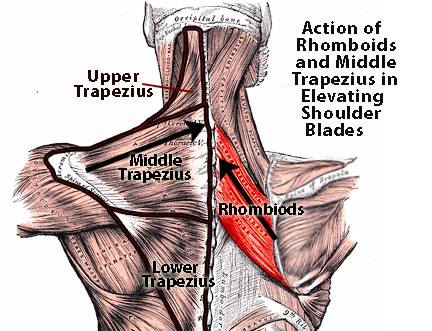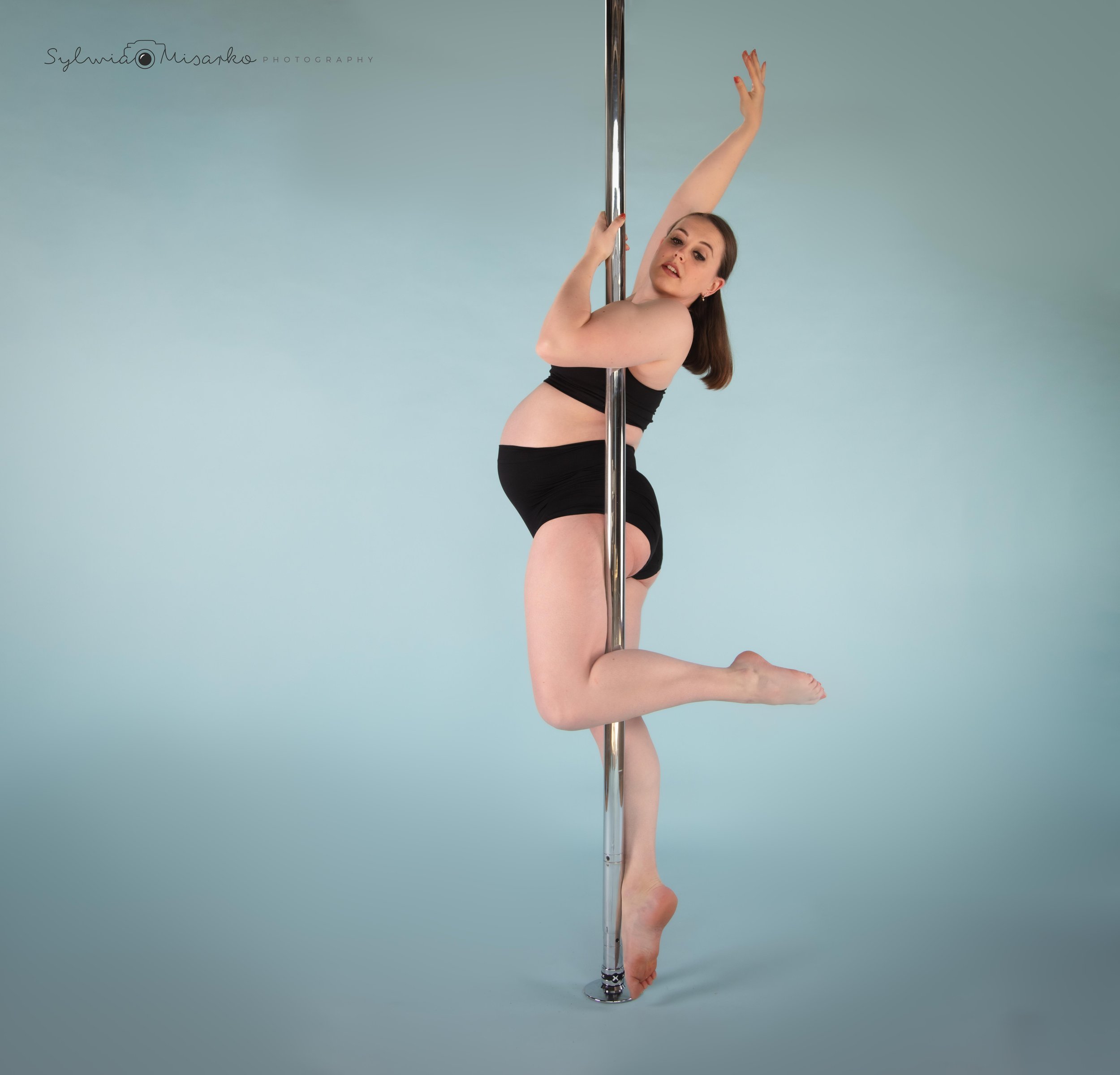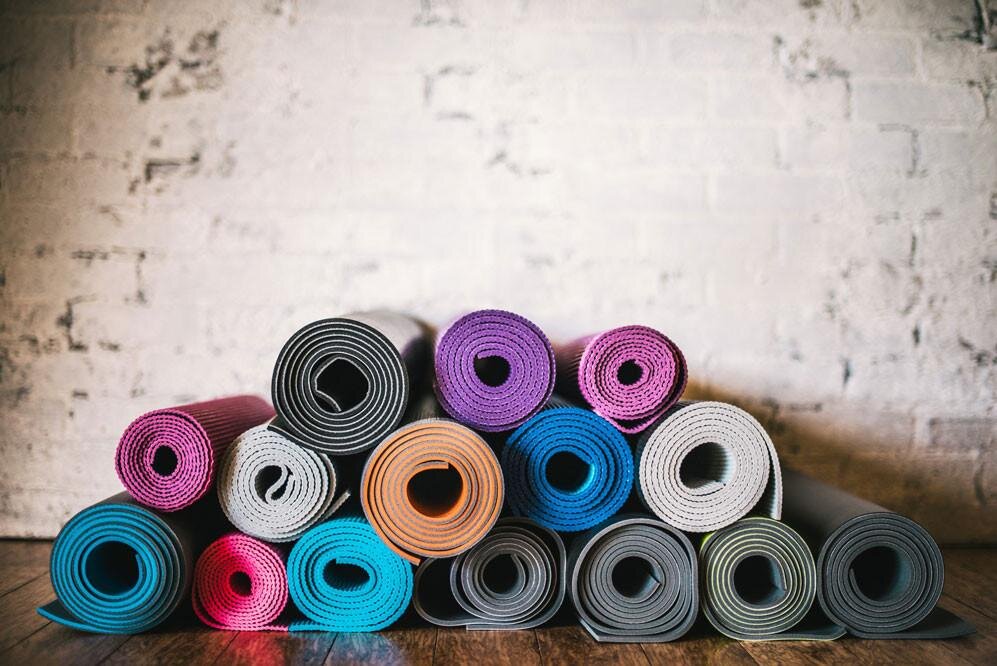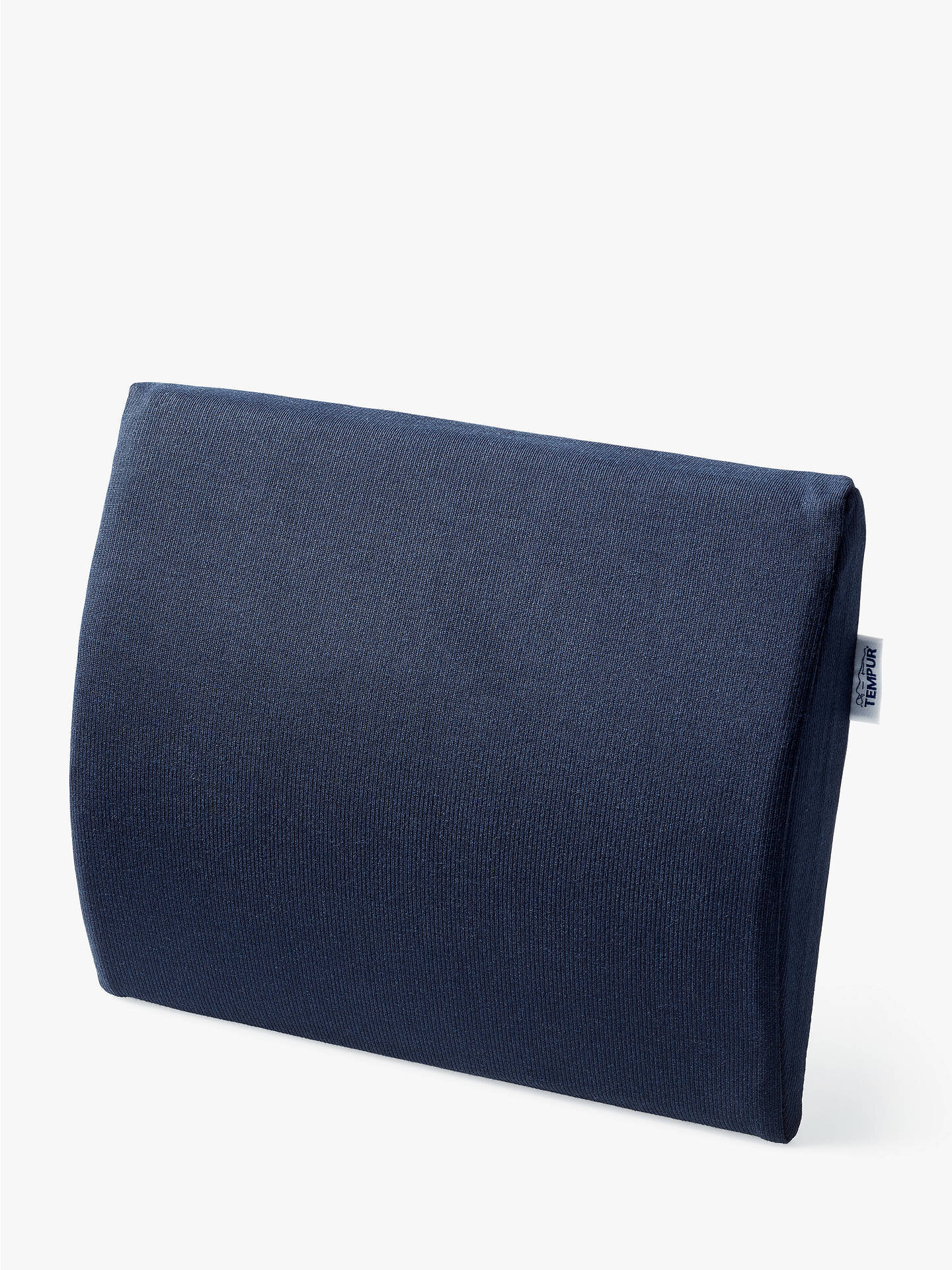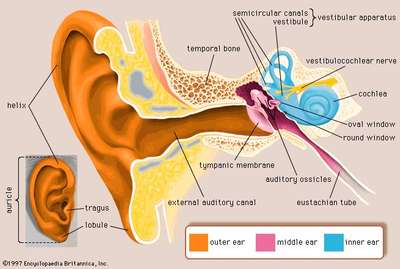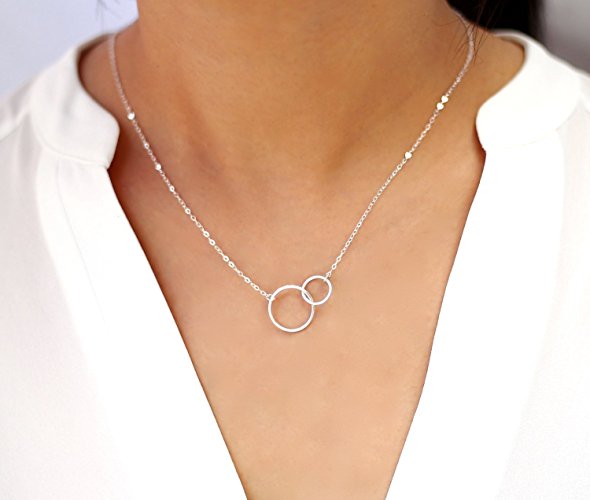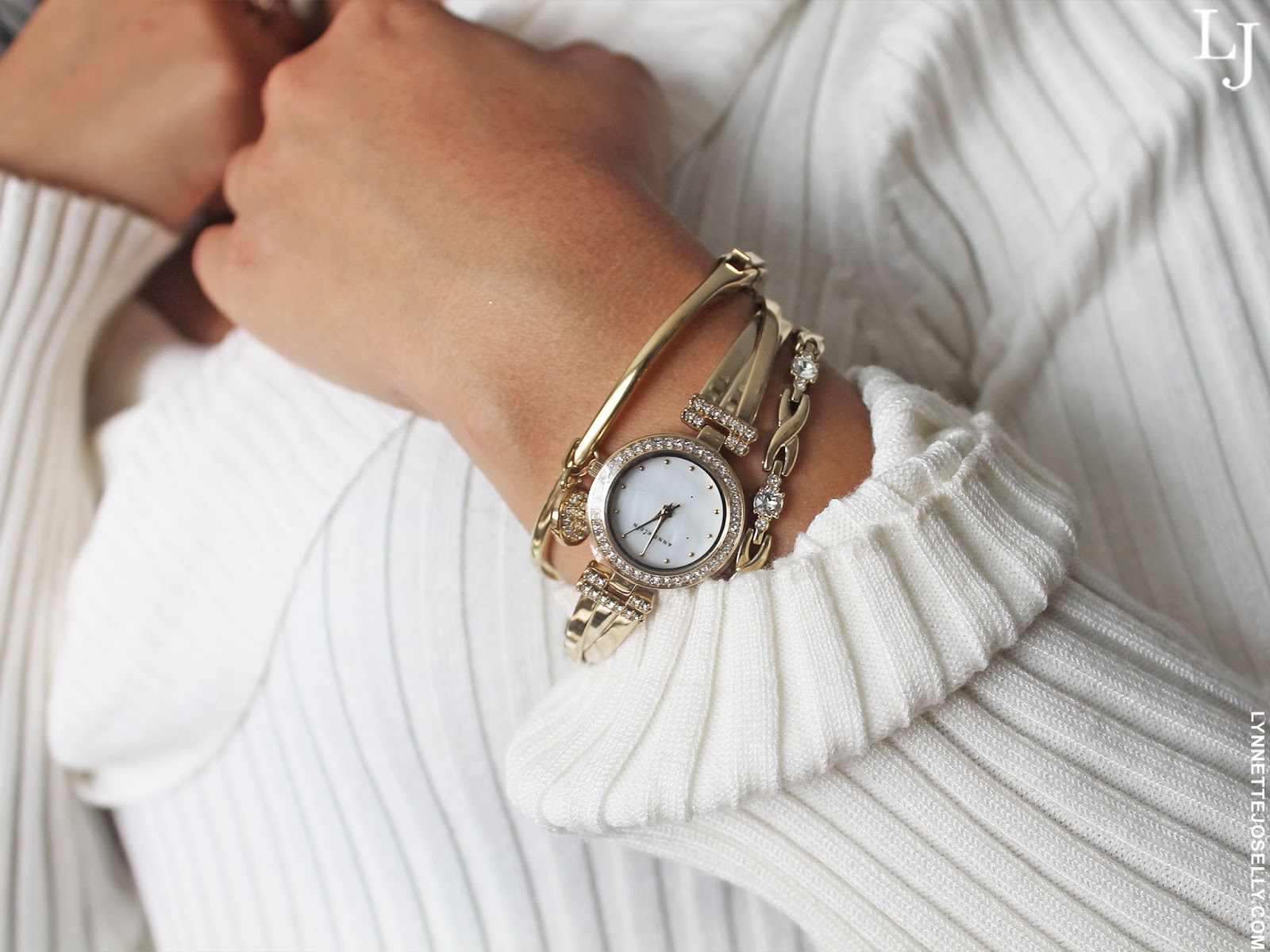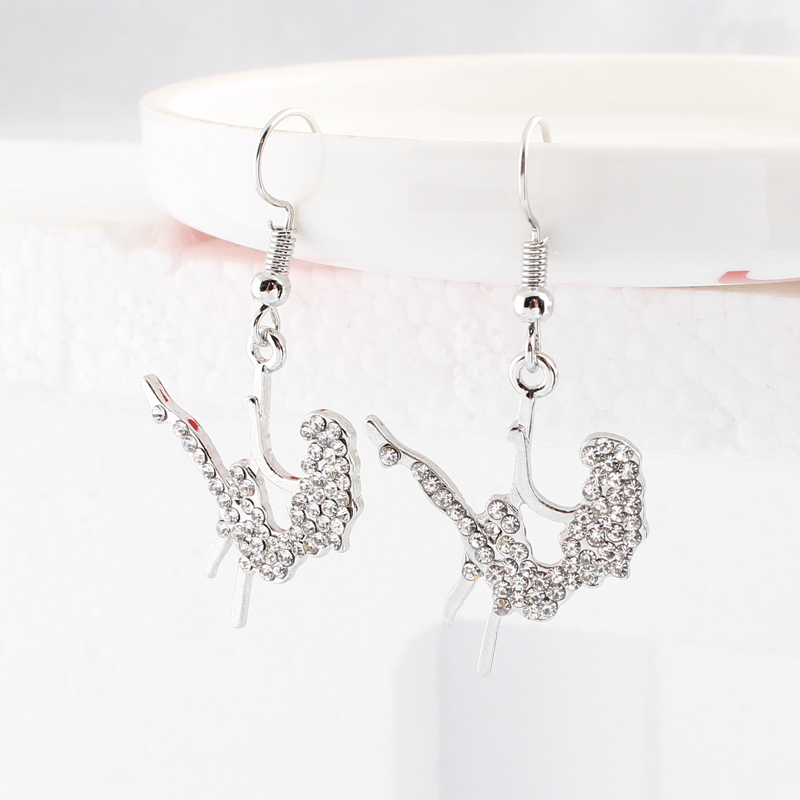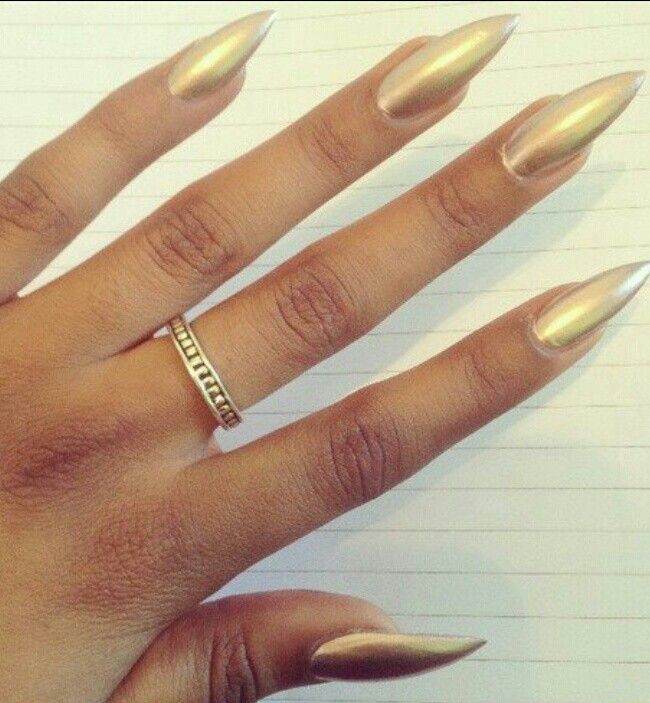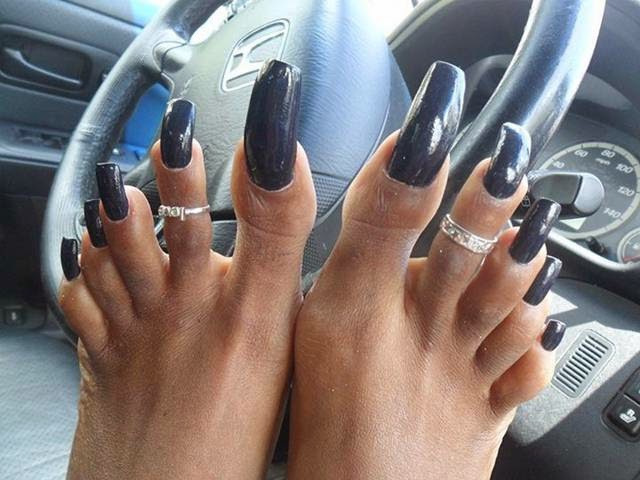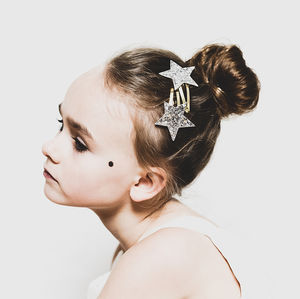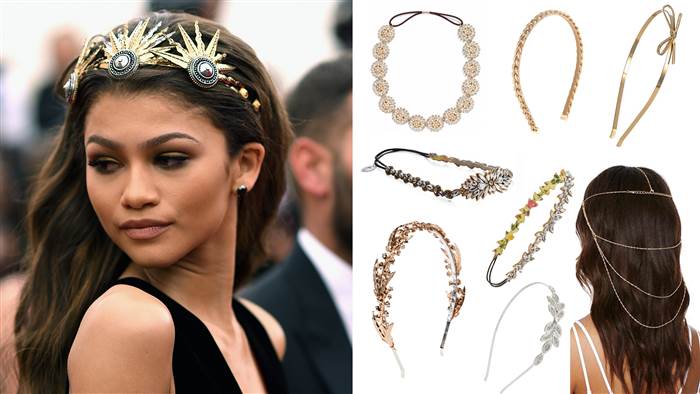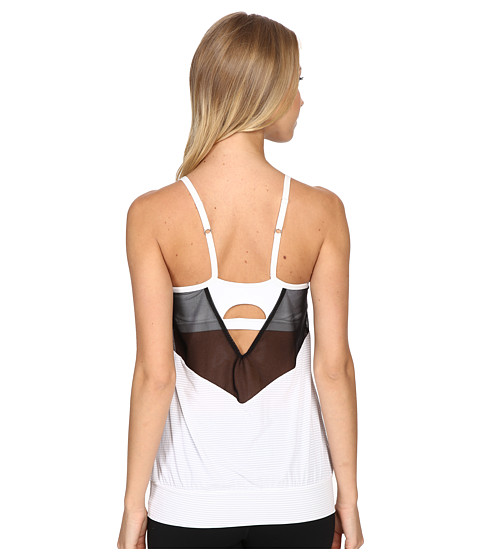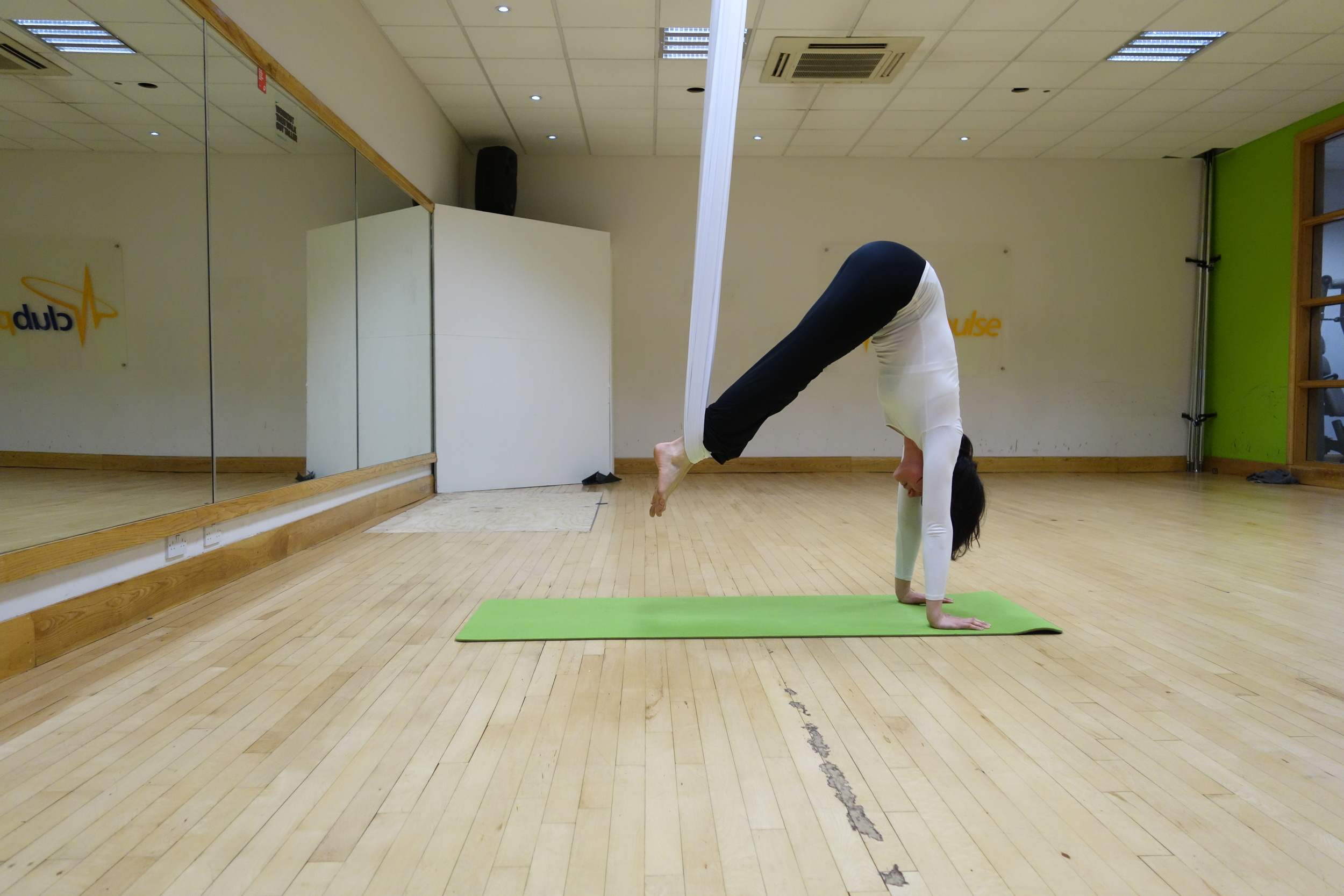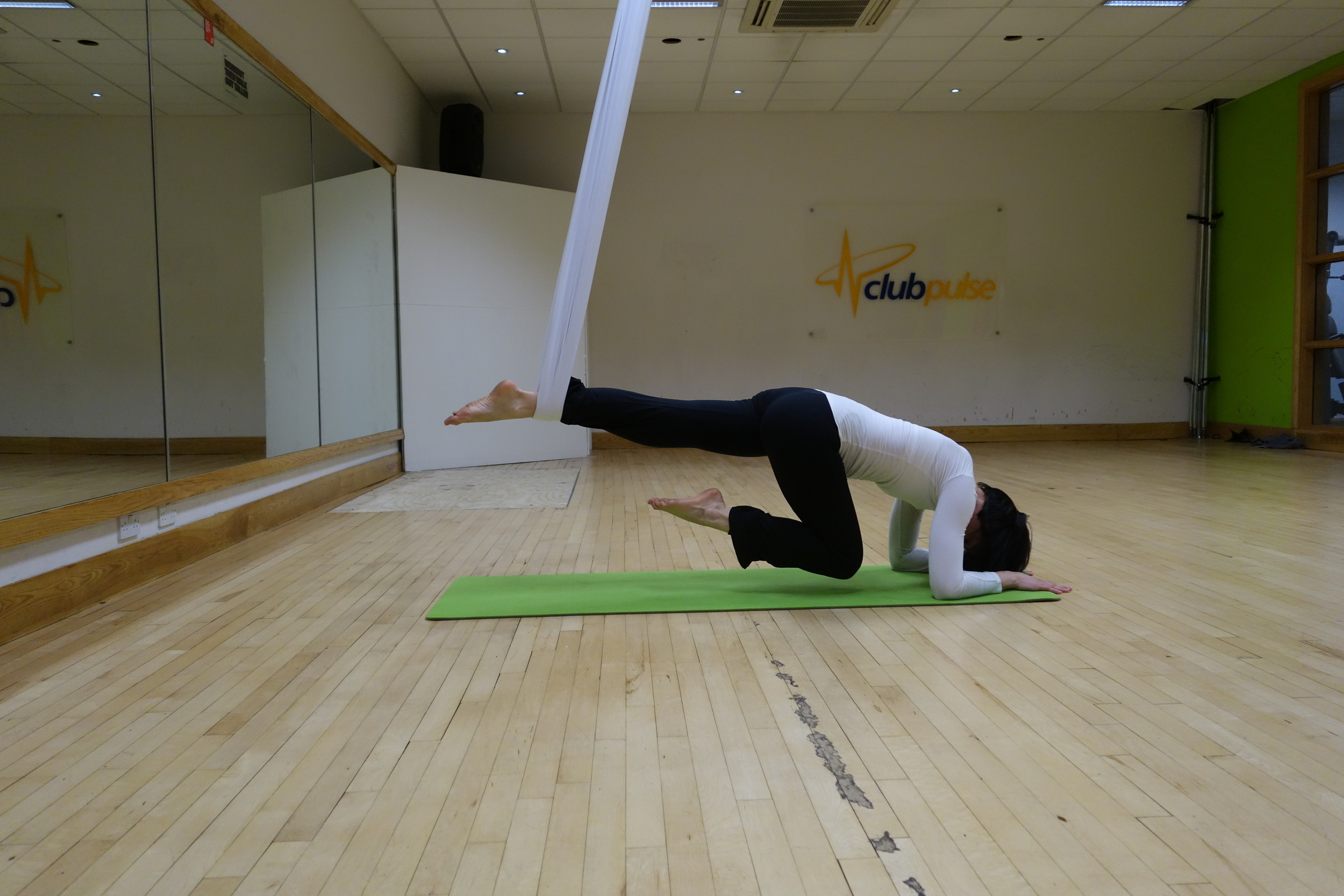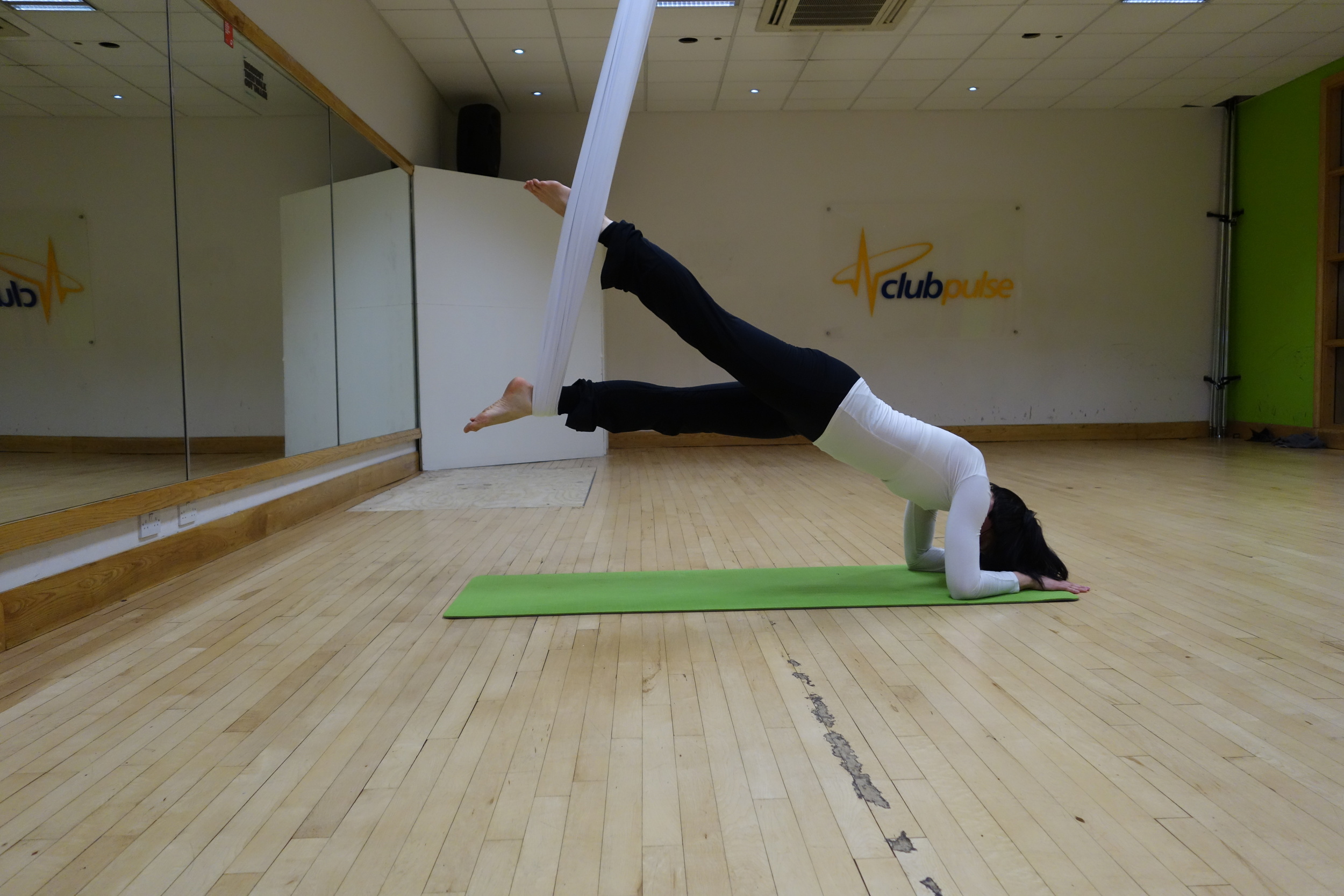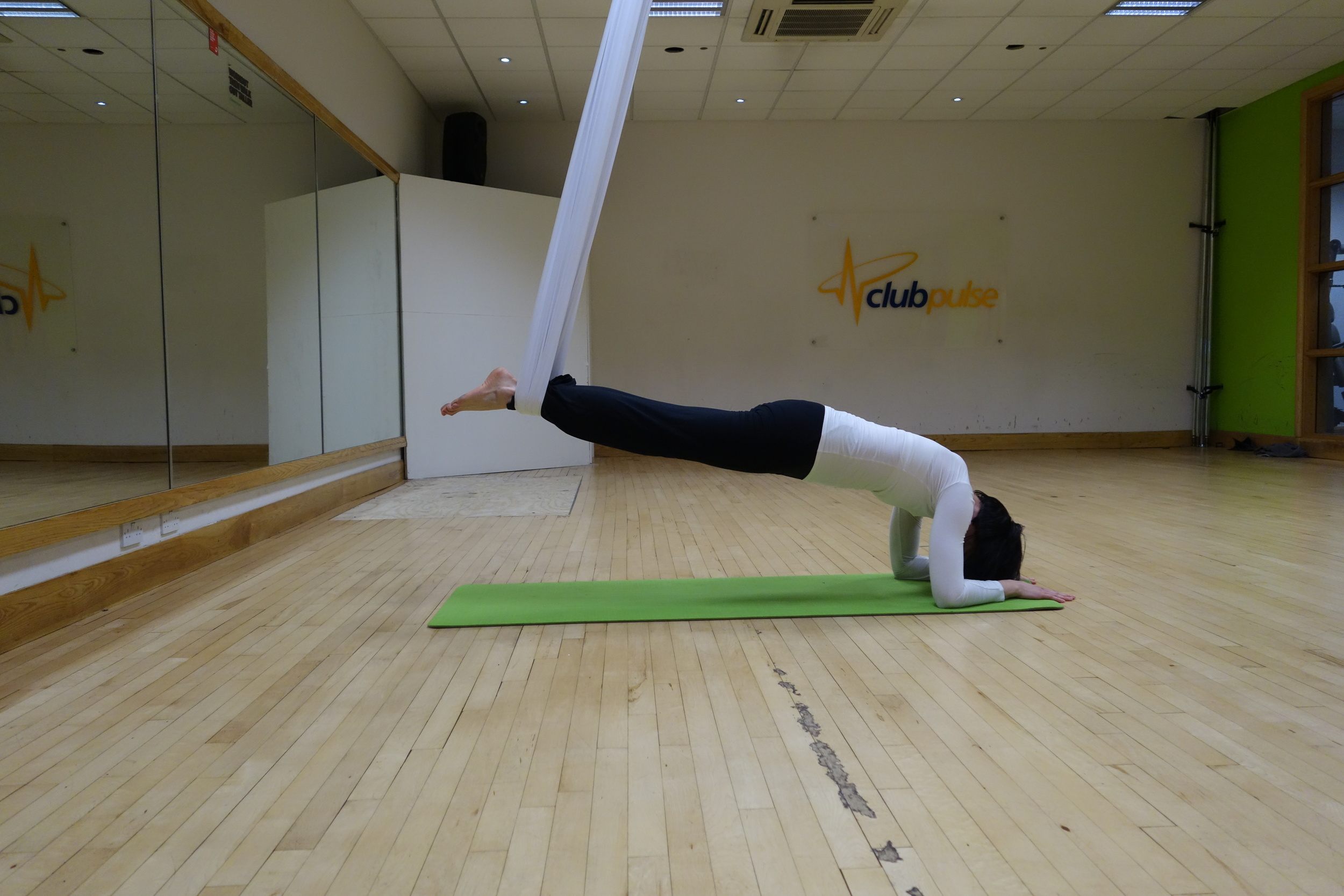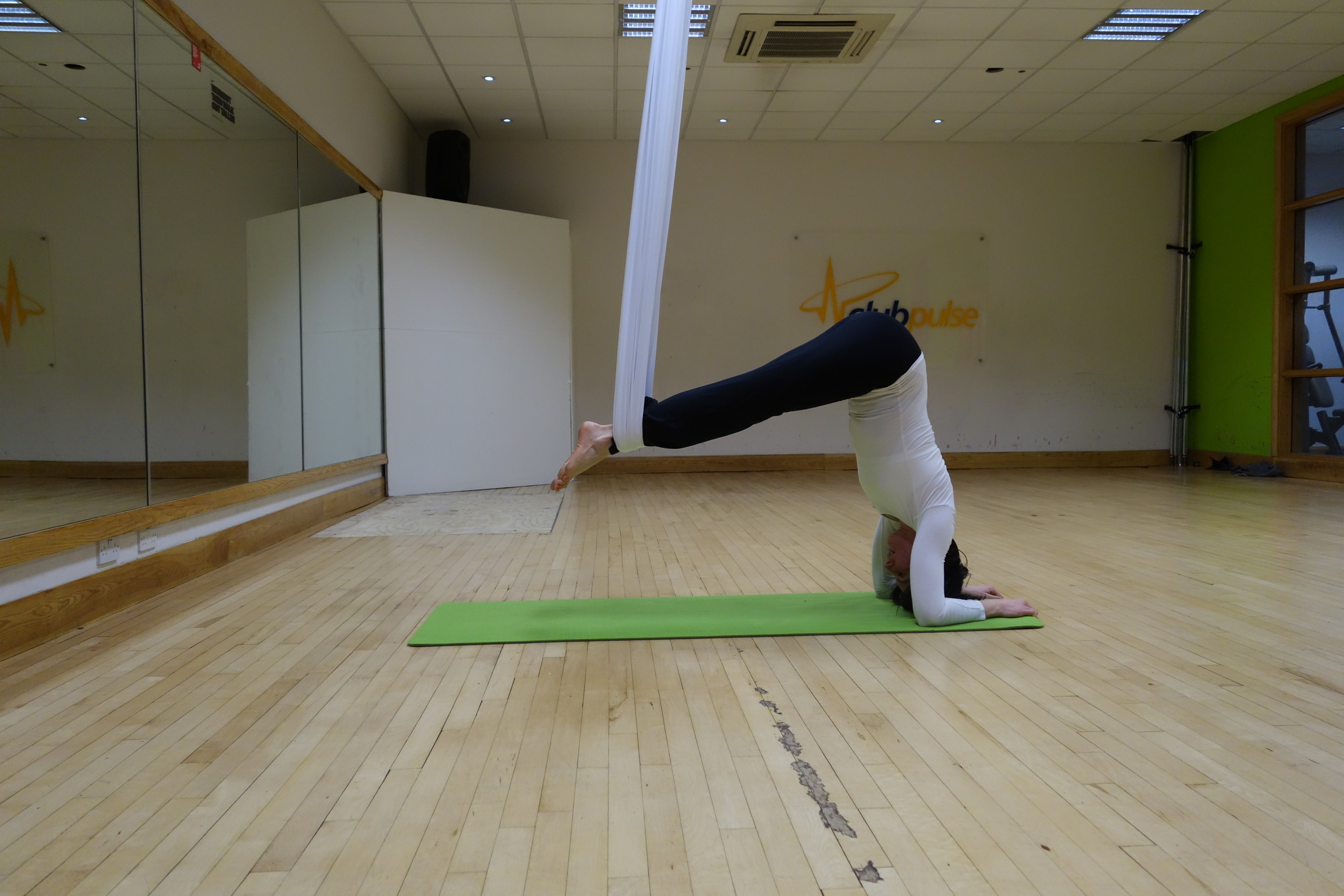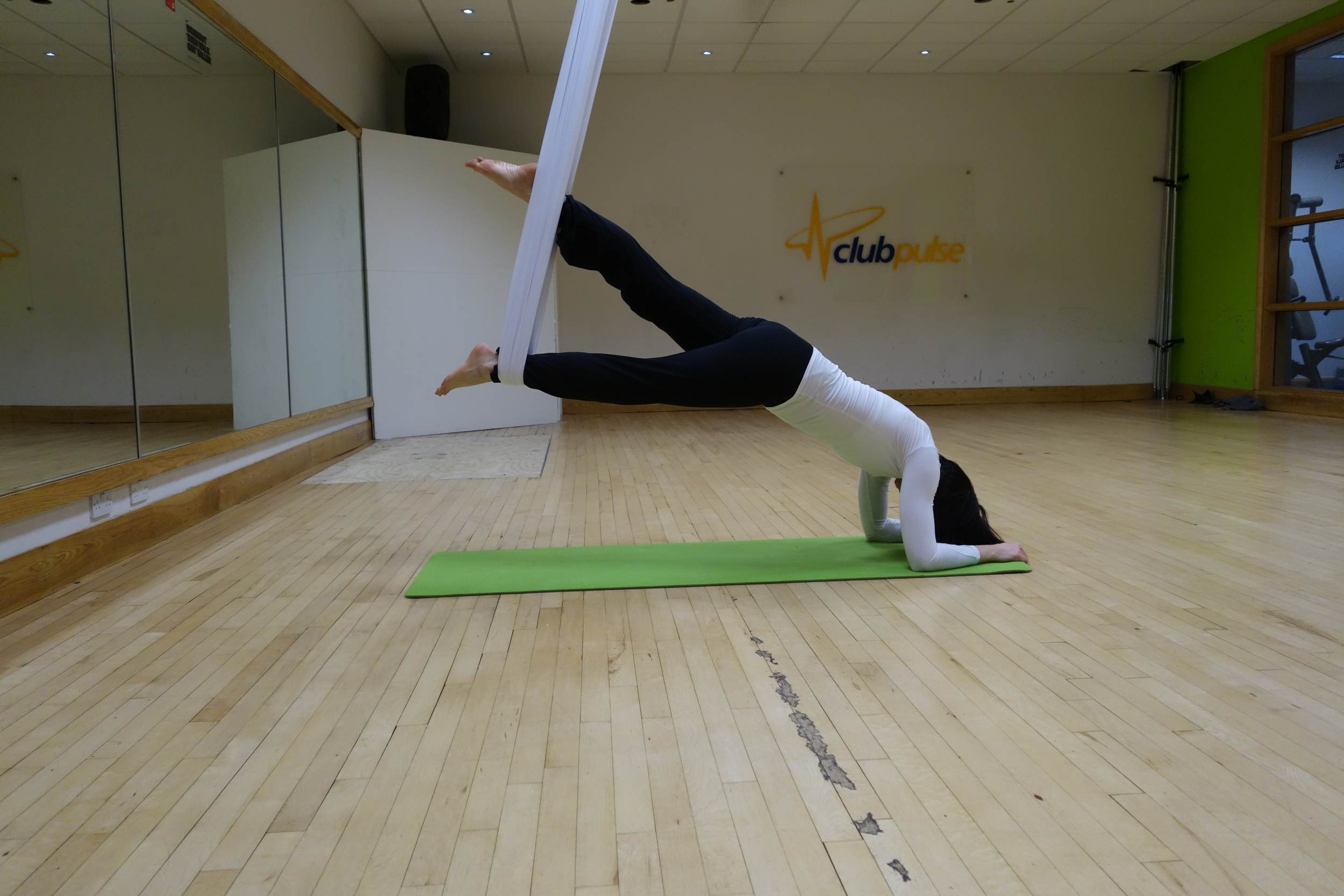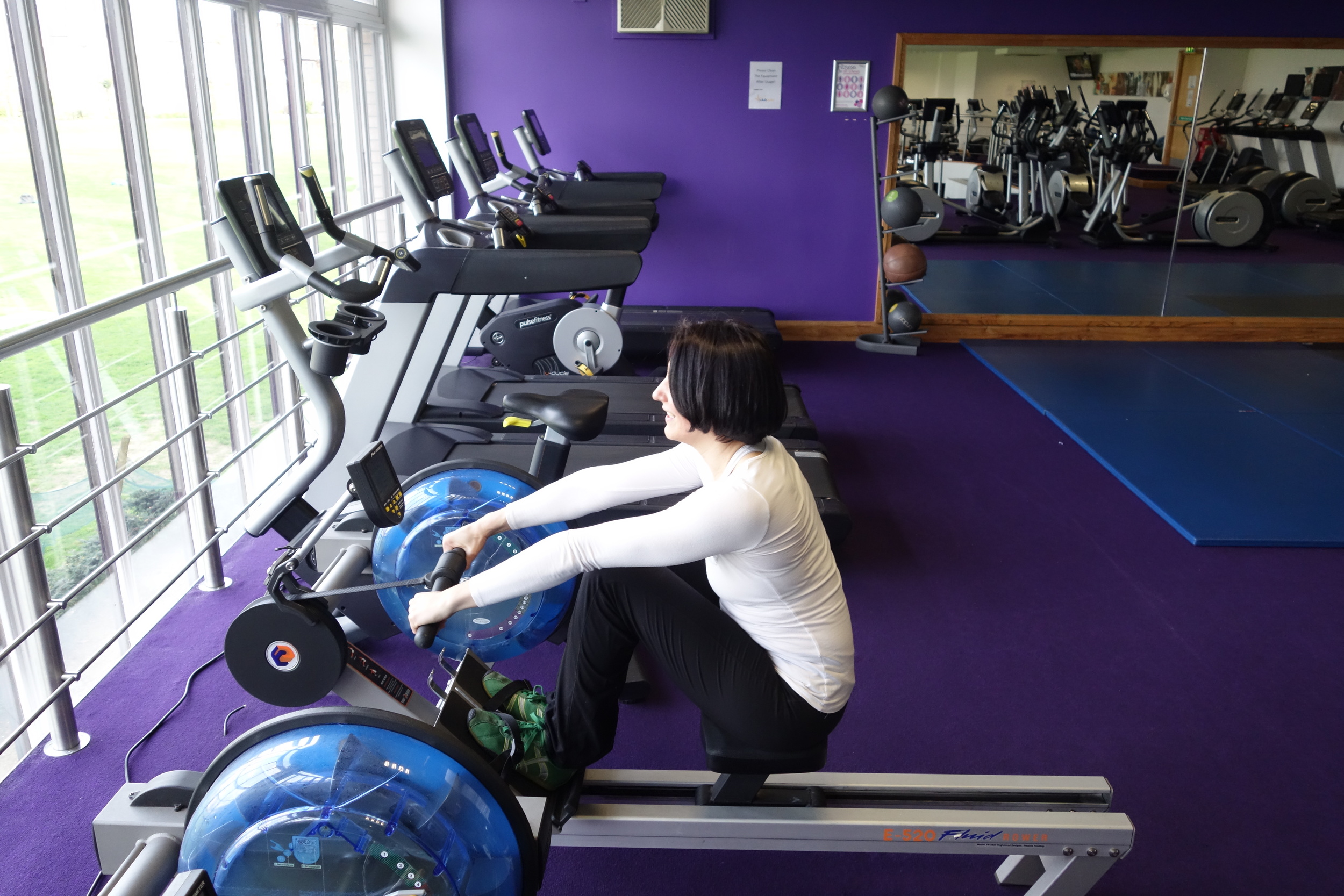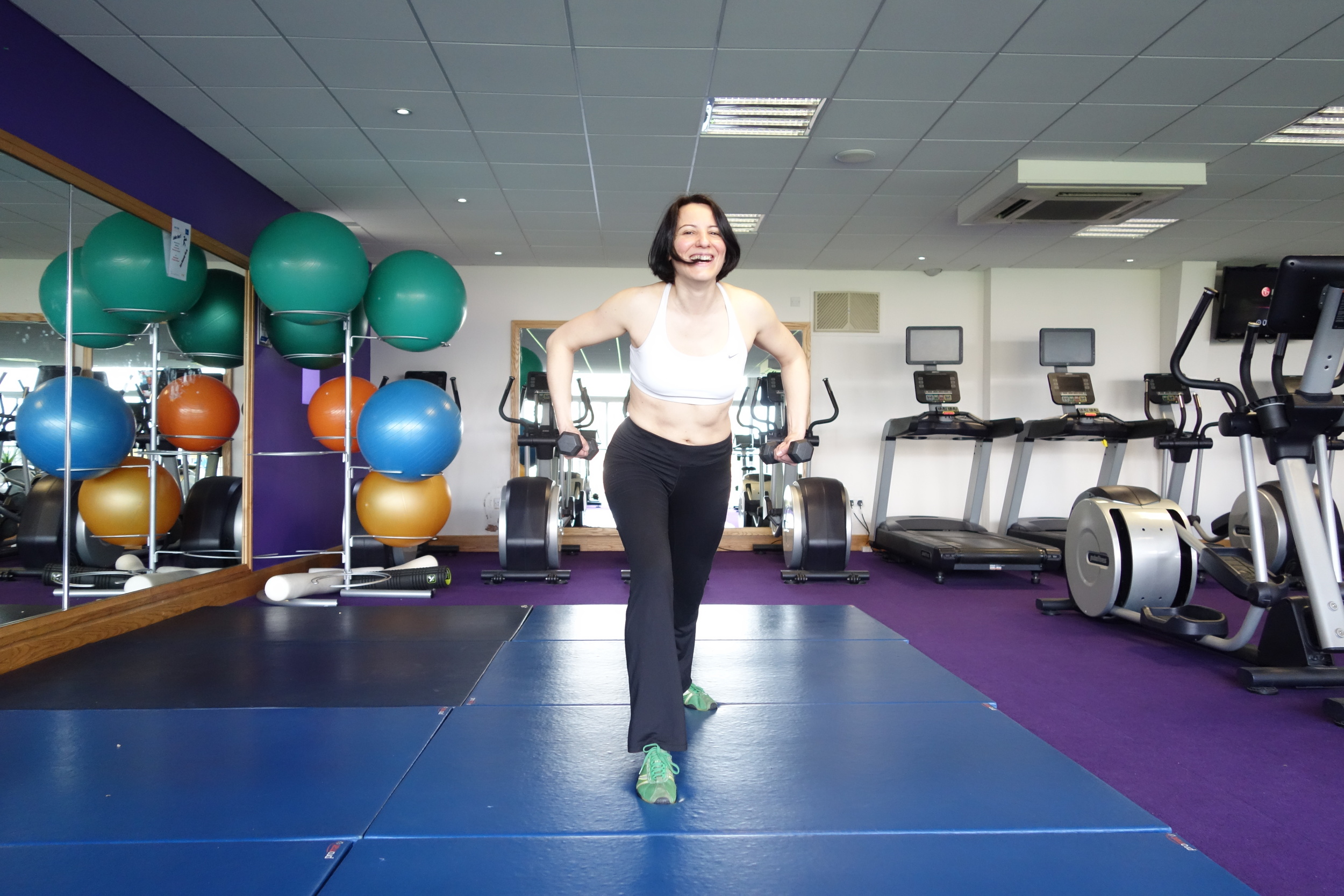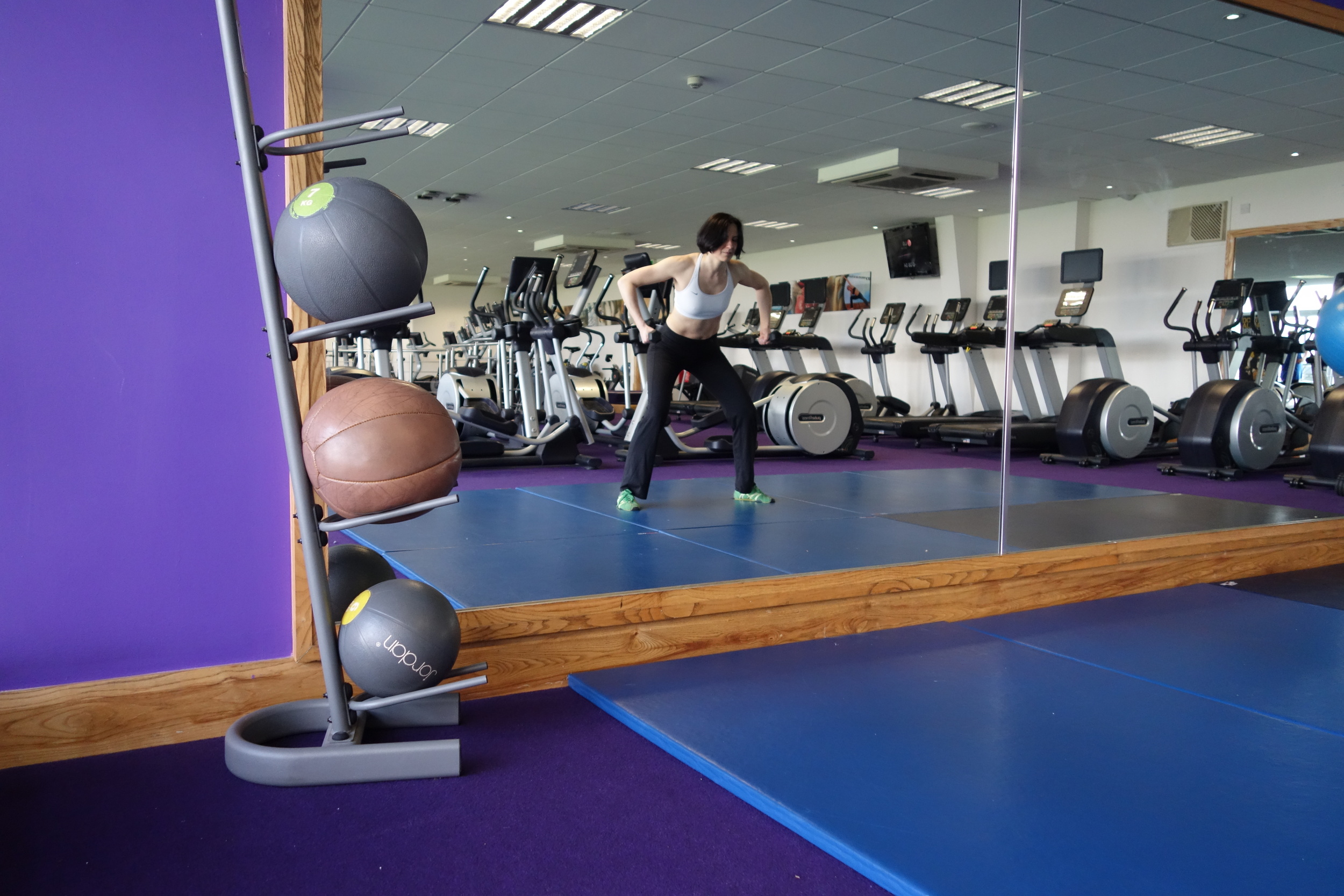Aerial yoga is a unique form of exercise that combines traditional yoga poses with the use of a silk hammock suspended from the ceiling. This innovative approach is available in Southeast London, Forest Hill by Floating Fitness London. Our aerial yoga classes offer numerous benefits for physical, mental, and emotional well-being. Here are some reasons why aerial yoga is beneficial:
1. Core strengthening: Aerial yoga requires constant engagement of your core muscles to maintain balance and stability while performing various poses. This results in improved core strength, stability, and toned abdominal muscles.
2. Spinal decompression: The hammock provides support and allows for gentle traction of the spine, which helps decompress the vertebrae and alleviate compression. This can relieve back pain, improve spinal alignment, and enhance overall flexibility.
3. Increased flexibility and range of motion: Aerial yoga incorporates both active and passive stretching. The silk hammock assists in deepening stretches and achieving greater flexibility by reducing the pressure on joints and muscles. Over time, regular practice can lead to increased range of motion and improved overall flexibility.
4. Improved balance and proprioception: Balancing on a suspended silk hammock challenges your stability and coordination, enhancing your balance and proprioceptive abilities. This can have positive effects on overall body control, posture, and body awareness.
5. Full-body strength: Aerial yoga engages various muscle groups simultaneously, resulting in a full-body workout. In addition to core strength, it also helps strengthen the upper body, including the arms, shoulders, and back muscles. Over time, this can lead to improved muscle tone and overall strength.
6. Stress reduction and relaxation: Aerial yoga incorporates elements of meditation, deep breathing, and mindfulness. The gentle swinging and supported poses can induce a sense of relaxation, calmness, and stress reduction. This combination of physical movement and mental focus helps to relax the mind, promote mindfulness, and enhance overall well-being.
7. Circulation and lymphatic flow: Inverted poses, such as hanging upside down, can improve blood circulation and lymphatic flow. This can promote detoxification and enhance the delivery of oxygen and nutrients throughout the body, thereby supporting overall health and vitality.
8. Boosted mood and energy: Like most forms of exercise, aerial yoga stimulates the release of endorphins, which are known as "feel-good" hormones. This can help elevate your mood, increase energy levels, and promote a sense of well-being. It's important to note that aerial yoga may not be suitable for everyone, particularly those with certain medical conditions or injuries. It's advisable to consult with a qualified instructor or healthcare professional before starting any new exercise program.

